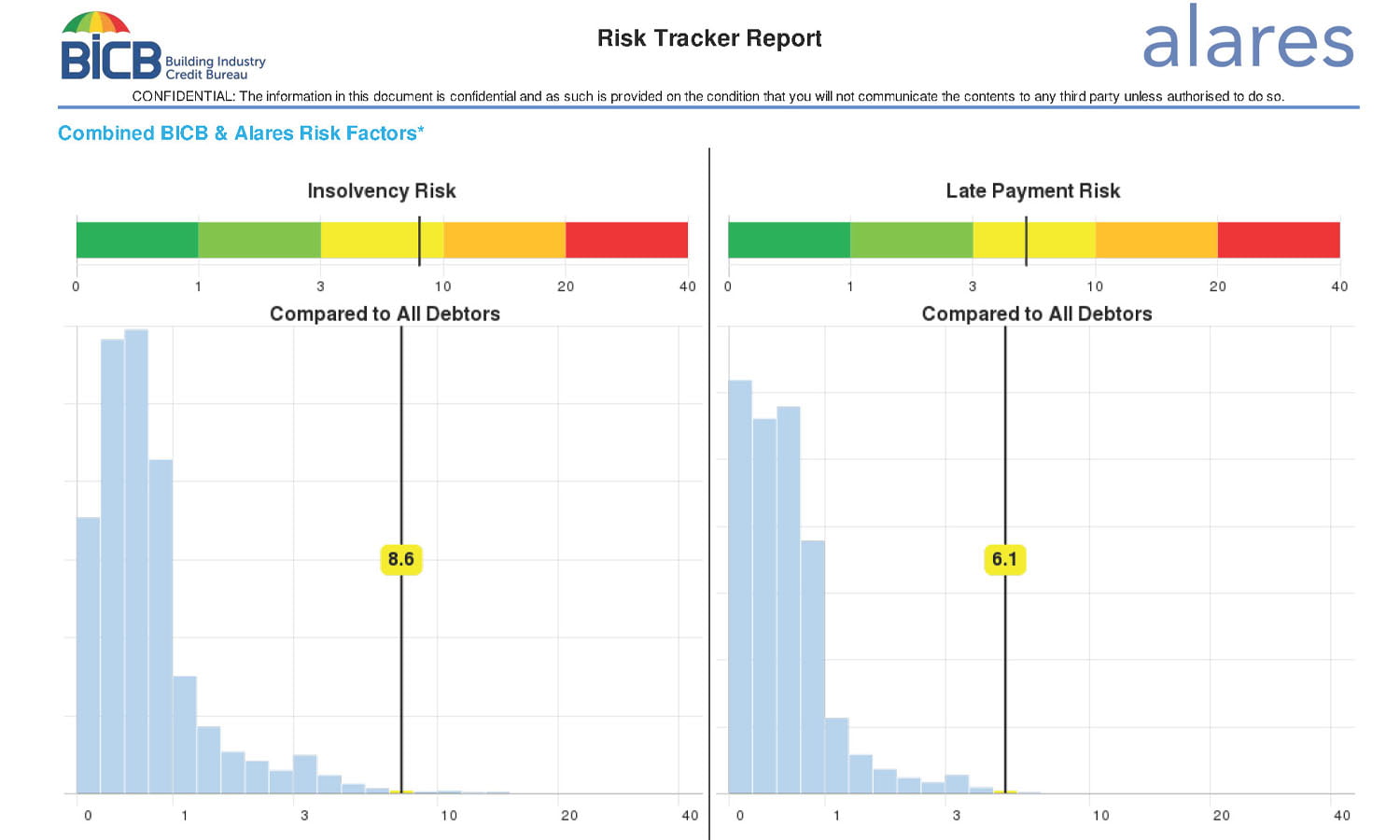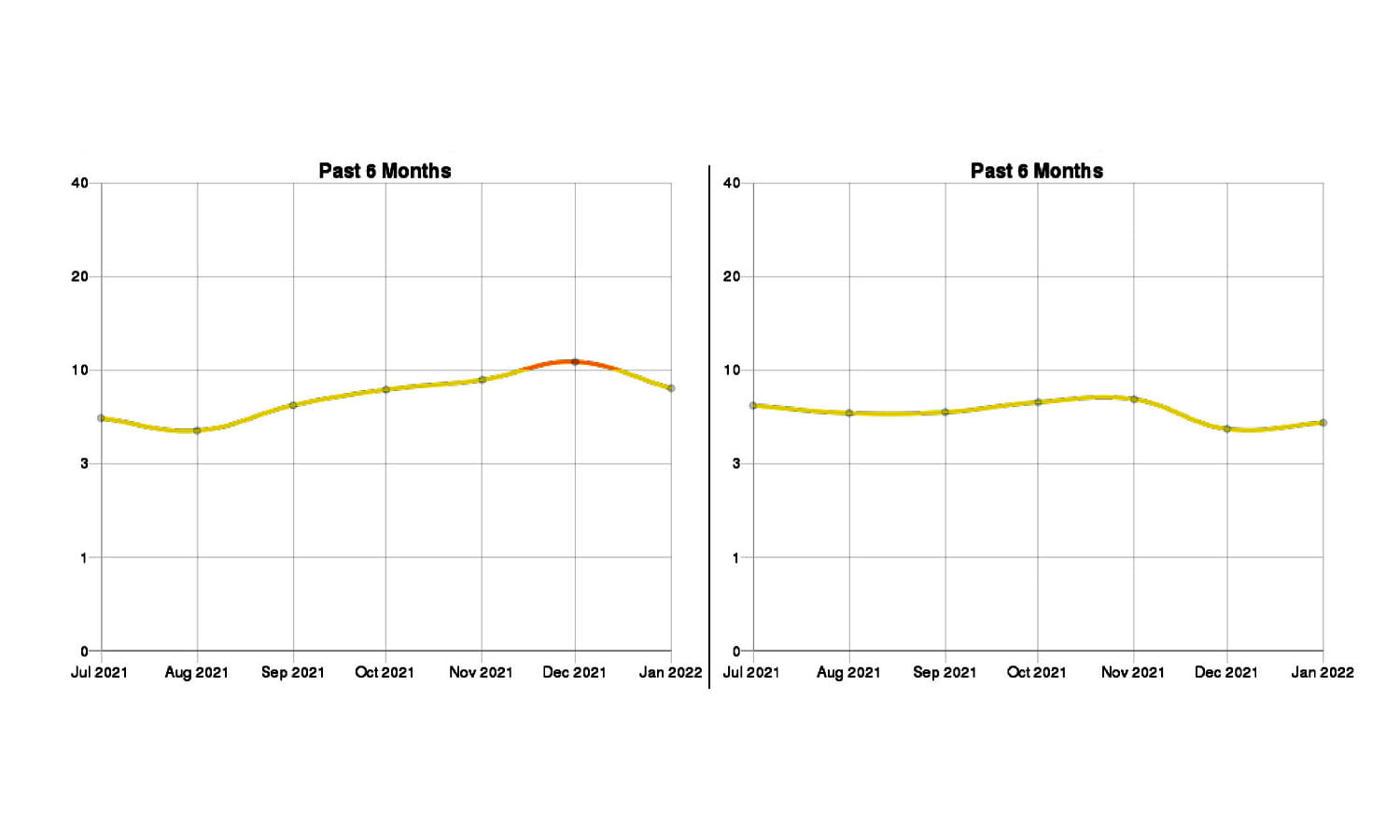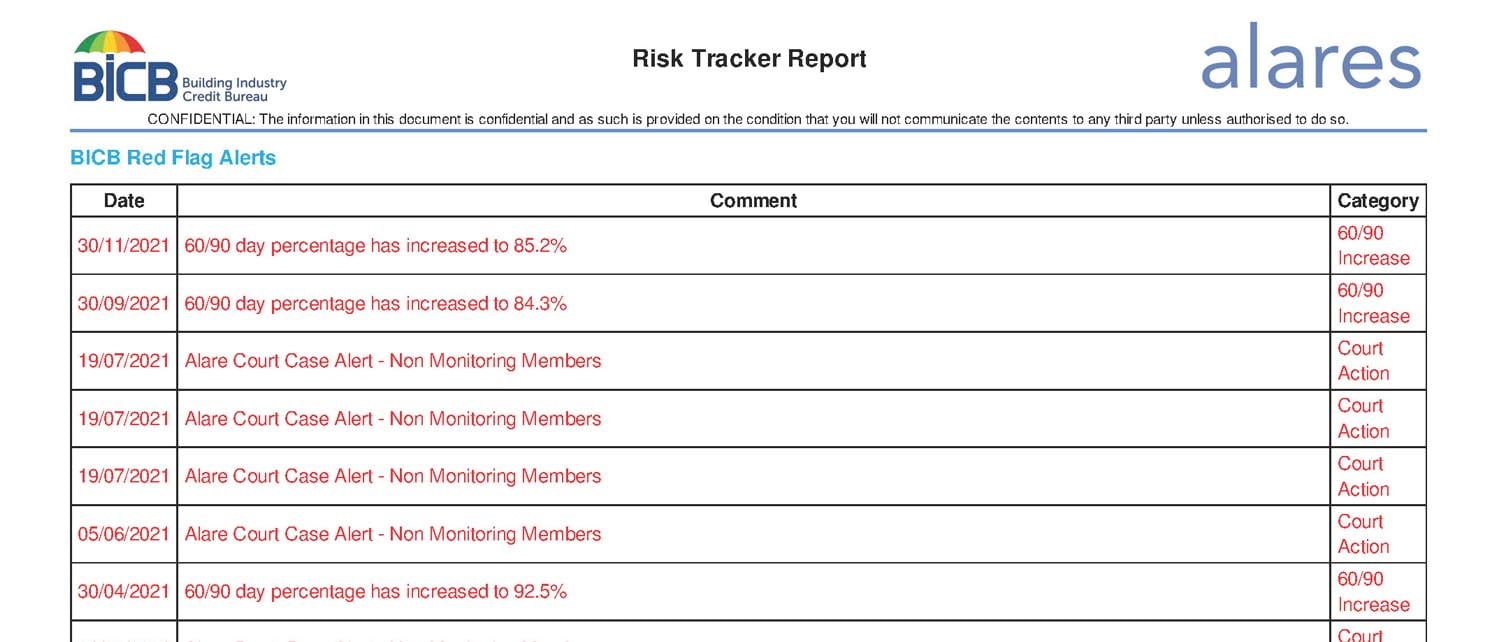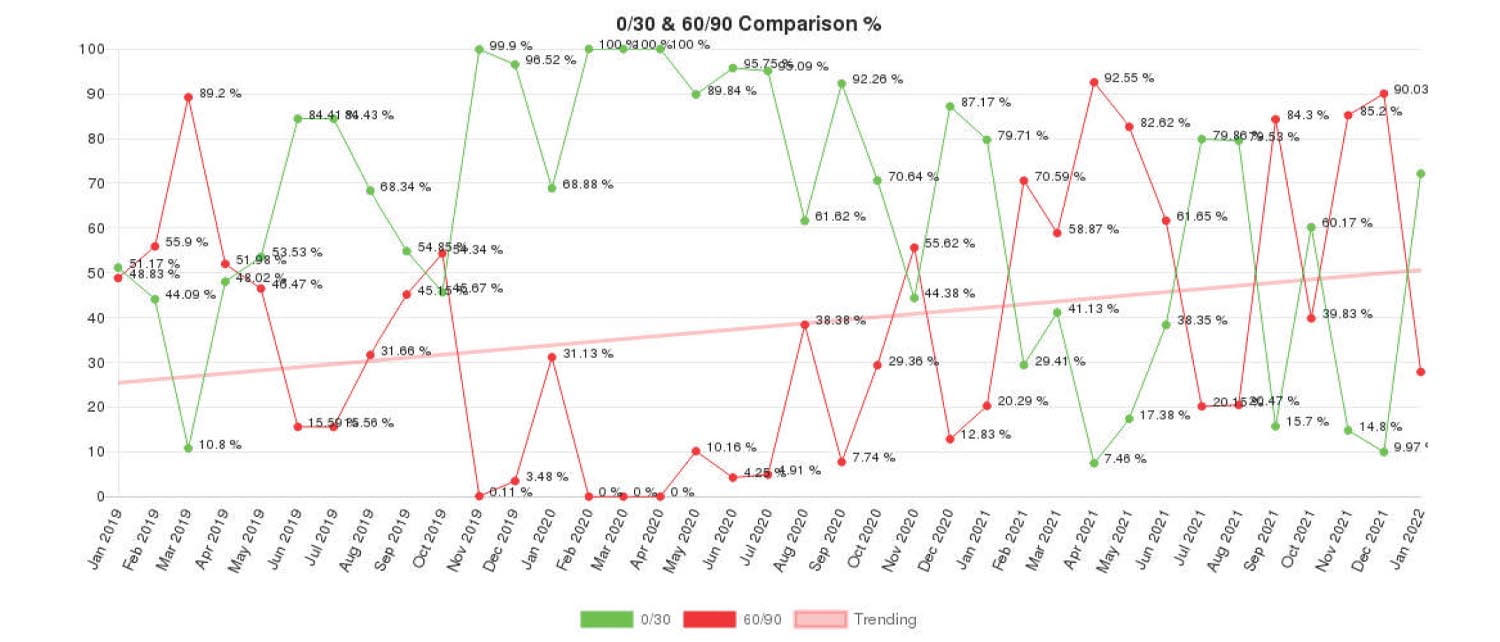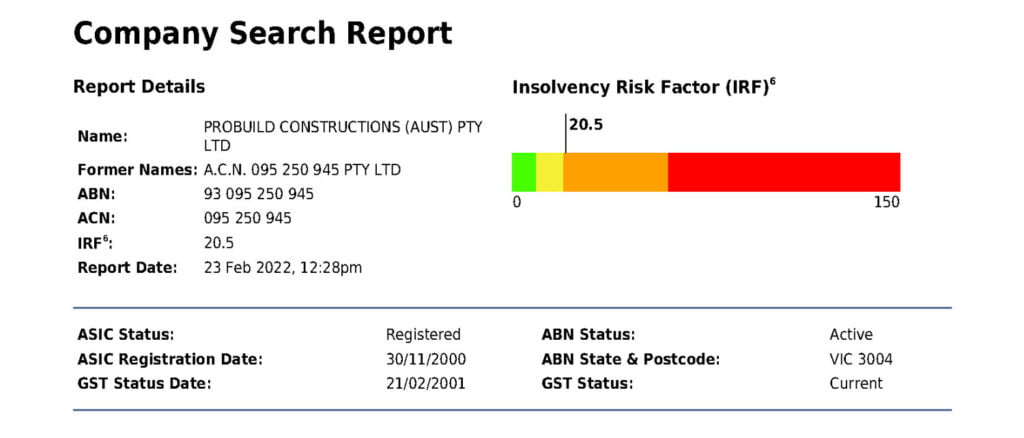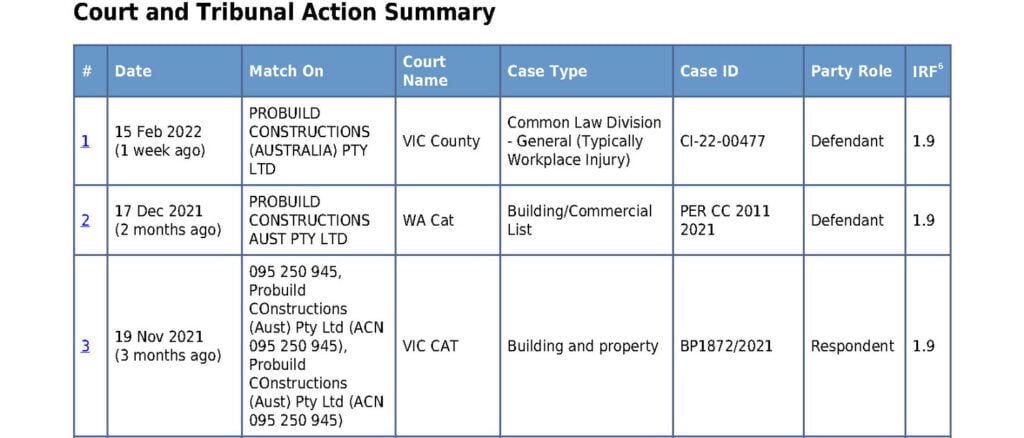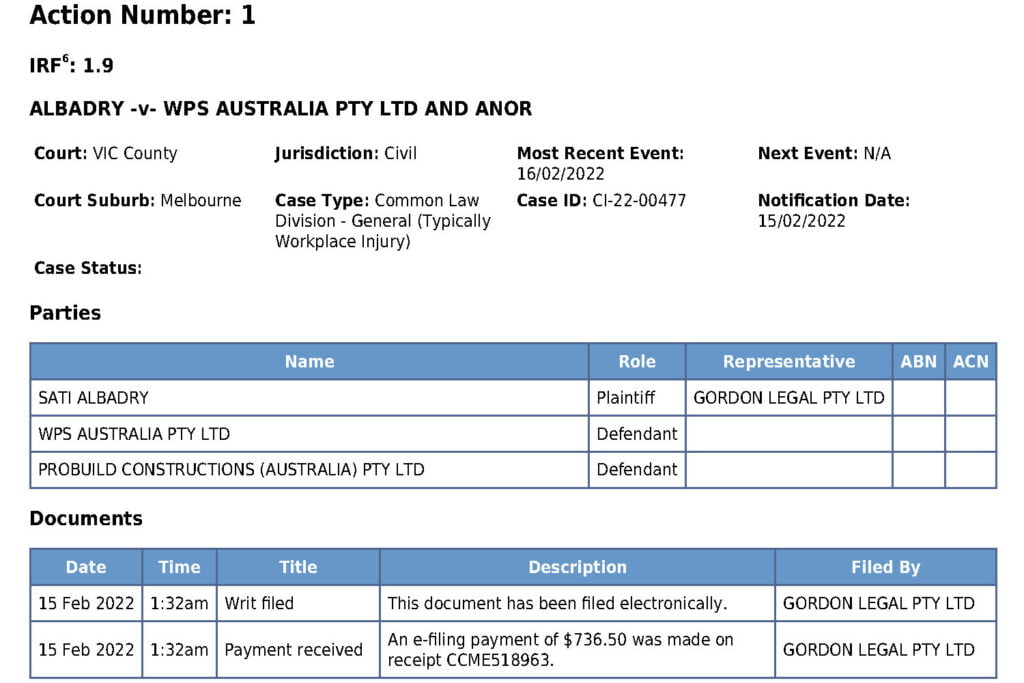RISK TRACKER
The Combined BICB & Alares ‘Risk Tracker’ score is a statistical tool based on data contained within the BICB and Alares databases that aims to rank order a subject relative to other subjects within those databases.
Risk Tracker is a tool which is only available to BICB members and is accessed through the members’ portal. It is a very powerful tool for credit managers in assessing the risks involved in dealing with an entity.
When a member requests a Risk Tracker report on an entity, a substantial report is generated. This report is made up of the following components – each of which will be explained in the following sections of this page.
Components of a Risk Tracker report
Illustrations on this page are taken from a Risk Tracker report on ProBuild Constructions (Aust) Pty Ltd – a company which went into liquidation in early 2022.
The header section of the Risk Tracker report on an entity identifies the entity and lists such details as the corporate name, ACN, ABN and licences held by the entity.
The Overview also gives an indication of the level of activity which will be included in the body of the report – indicated by two key metrics:
- Red Flag Alerts – as generated by BICB reports
- Court Actions – as reported by Alares Systems
The details contained in these metrics are analysed to determine the Risk Tracker indicators.
All illustrations on this page are drawn from a Risk Tracker Report on Probuild Constructions (Aust) Pty Ltd which was one of 18 Probuild entities placed into external administration in February, 2022.
Risk Tracker is a statistical tool that aims to rank order a subject relative to other subjects within the BICB and Alares databases. It does this by generating two risk scores – the risk of insolvency and the risk of late payments.
In the example shown here, the entity was 8.6 times more likely than all of the other entities in the system to become insolvent. It is also seen to be 6.1 times more likely that other entities to make a late payment.
The second diagram tracks the movement in these risk scores over the immediately preceding 6 months. It clearly shows the risk scores have been consistently elevated.
RED FLAG ALERTS
Red Flag Alerts are notes which are automatically created whenever adverse information is found on a debtor. Members trading with the entity are notified via email whenever this occurs.
The following events trigger a Red Flag Alert:
- Consolidated debt at 60 days or greater increases by more than 10.5% month on month
- Adverse ASIC notices
- Licencing issues
- Legal Actions
- Insolvency
All Red Flag Alerts are posted to the Dashboard and also appear in any Risk Tracker Report generated on the entity.
DEBTOR AGING ANALYSIS REPORT
This section of the report displays the entity’s payment history for the preceding 2 years. It compares the 0/30 day balances and the over 60 day balances and expresses them as a percentage of the total.
A score of 100 means there are no amounts outstanding at 60 days or over.
The data is expressed in both in tabular and graphical form. The graphical form also plots the trend in payment history.
ALARES COMPANY SEARCH REPORT
Many building industry insolvencies are preceded by early warning signs. One of the leading indicators of financial stress and insolvency is Court actions.
Among the QLD building industry insolvencies in the past 5 years:
- 68% were preceded by 1 or more Court actions
- 53% were preceded by 2 or more Court actions
- 34% were preceded by 3 or more Court actions
- 25% were preceded by 4 or more Court actions
This section of the Risk Tracker report gives details of the entity. and also the entity’s Insolvency Risk Factor.
Insolvency Risk Factor is a risk multiplier. In this case, it is indicating that the entity is 20.5 times more likely to become insolvent in the next 12 months than is an entity with no court actions. For a detailed explanation of IRF, see Patrick Schweizer’s video presentation given at BICB’s October 2020 Seminar .
COURT AND TRIBUNAL ACTION SUMMARY
The next section of the Risk Tracker report outlines a summary of each Court and Tribunal Action involving the entity. In this report, there were over 100 actions listed.
The most common types of Court actions that preceded these insolvencies are:
- Money owing claims
- Winding up applications
- Building & construction disputes
- Workplace injury / Workcover / negligence claims
- Fair work / industrial disputes
DETAILS OF EACH COURT ACTION
The Risk Tracker Report then lists the details of every court action included in the summary.
The image shows the details included in Court Action No 1 in the Court and Tribunal Action Summary displayed above.

